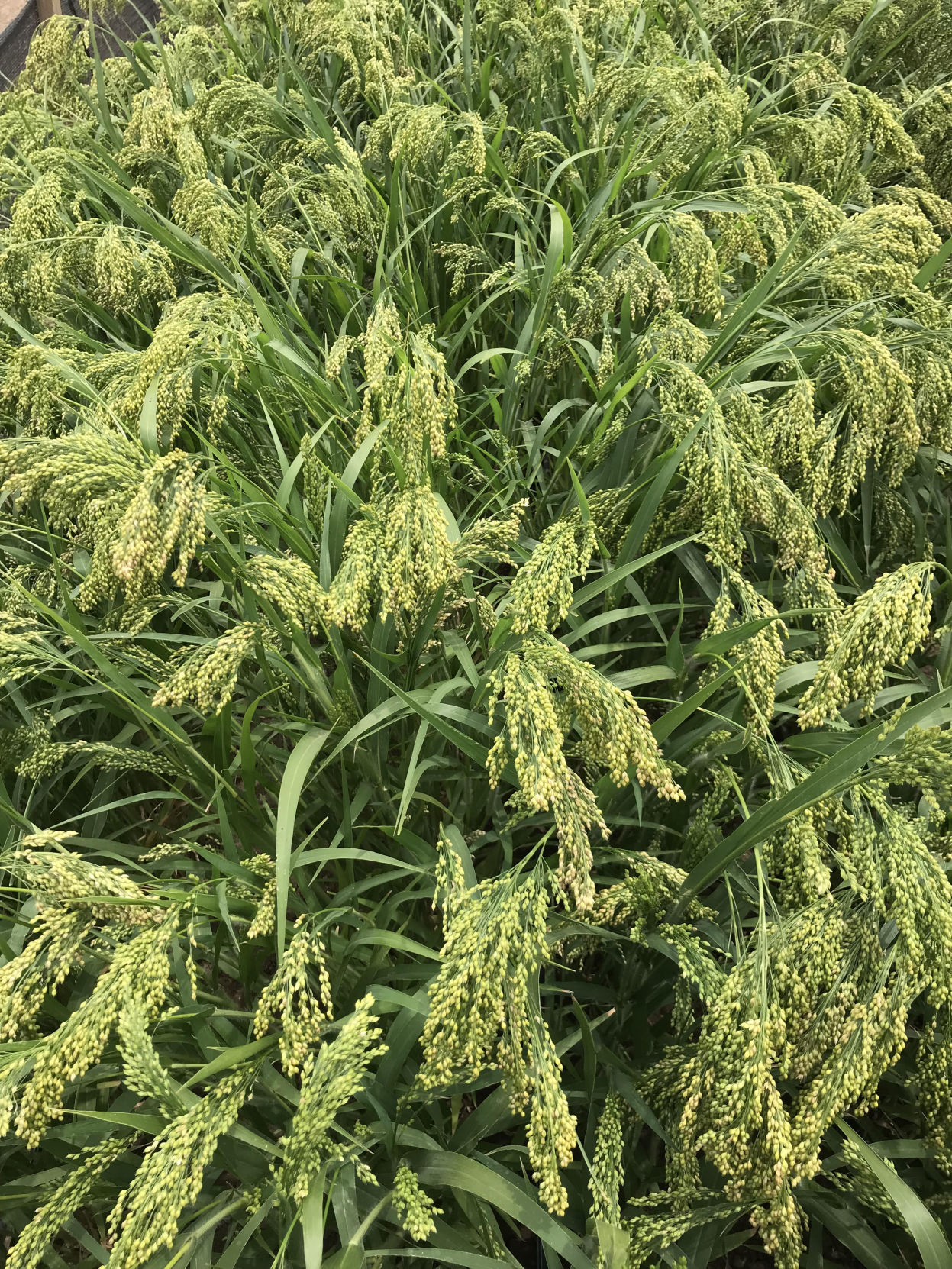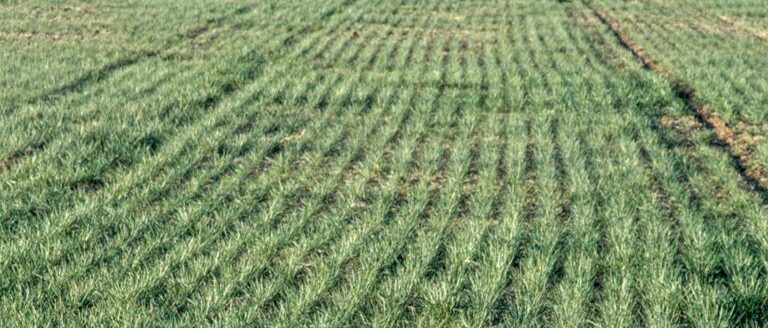Genetics combined with management and technology is helping Ogallala farmers make sure every drop of water counts

Surrounded by circles of irrigated cornfields that keep the farm economy going here on the southwest Kansas plains, Grant County farmer Clay Scott wants to make sure every drop counts.
With just 17 to 18 inches of rain during a good year, the fifth-generation farmer has long relied on the Ogallala Aquifer beneath his fields to sustain his crops, especially water-thirsty corn. But the once abundant water supply is dwindling. The wells his grandfather drilled decades ago, that once pumped more than 1,000 gallons per minute, are now averaging 300 gallons.
For Scott, the Ogallala has created an economic oasis in the semiarid region. It’s why corn bred for drought-tolerance, along with better technology and management, has proven to be essential to keeping the region’s profitability from drying up with the aquifer.
Scott began planting varieties with Monsanto’s DroughtGard genetics several years ago, first as a research test plot. In 2012, 10 percent of his corn was planted to the technology. Today, it’s more than 60 percent.
On the harsh High Plains, the goal is to beef up corn to withstand any condition Mother Nature dishes out. Farmers like Scott are seeing the results of efforts to provide seed technology to combat drought and a declining Ogallala Aquifer.
“We’re definitely doing things smarter and with better foresight and reasoning,” Scott said, noting he has implemented soil moisture probes and more efficient irrigation tools. “But, the genetics have definitely improved. We wouldn’t see the yields we are seeing today without genetic improvement.”
Preparing for water limitations
On the High Plains, drought is a possibility every season, said Chris Souder with Monsanto. Farmers also are facing irrigation constraints as groundwater declines. Others are facing pumping restrictions.
“Concerns over water and water availability is not going to go away anytime soon,” he said.
Farmers need a crop that can survive on limited irrigation, Souder said.
Monsanto released DroughtGard about six years ago, he said. Scientists continue to improve the varieties.
Testing includes cutting off irrigation later in the season to see how a plant will react, he said.
“Less water means less yield, but we want to identify those plants that have significant tolerance under those scenarios,” he said.
Development includes managing stress from not only sporadic rains and gaps in rainfall but also to survive extreme storm events.
“We are getting higher amounts of rainfall in one shot,” he said, adding farmers need genetics to withstand those extremes.
However, Souder stressed, management is just as important. Farmers are seeing the results of their genetics in combination with using new technology and implementing best management practices like no-till farming that can help increase the permeability of the soil and reduce runoff.
Scott added he is seeing how genetics and management are shaping the area. While irrigation pumping levels have declined, farmers are increasing their corn production as they plant better varieties and use tools that help them manage their water use.
For instance, he said, last year’s continuous crop dryland corn yields an average 129 bushels an acre.
Sign up for HPJ Insights
Our weekly newsletter delivers the latest news straight to your inbox including breaking news, our exclusive columns and much more.
“I think we are doing a better job of putting that plant in the position to maximize its full genetic potential,” he said. “I think we are doing a lot better job of letting that corn hybrid do the best job with, in many cases, fewer inputs than we have ever had.”
“It’s the mentality of growing more corn on less water,” he said. “And the state is seeing the benefits, too.”
Kansas received $1.2 billion more in tax revenue last year, he said, and agriculture, which is roughly 45 percent of the economy, played a role.
“That is a home run,” he said. “That is a good story.”
Water restrictions
In northwest Kansas, Sheridan County farmer Brent Rogers also depends on the Ogallala Aquifer for his survival. He knows without irrigation, it would be tougher to raise crops like corn in an area prone to dry spells.
In January, his Groundwater Management District No. 4 implemented district-wide mandatory pumping reductions.
It’s changed his way of thinking, Rogers said. He still plants corn but looks at ways to grow the crop under less water. Besides under limited irrigation, better genetics have helped him expand his dryland acres in the past 15 years.
About 70 percent of his dryland corn acres are shorter-season varieties—98-to-103-day corn.
“We have pulled our populations back and found these varieties really flex well and they still will yield well at lower populations,” he said. “I don’t think we’ve given (genetics) enough credit for what it has done to the corn production the past five years. The ability to flex, hang on when things are tough, especially on our dryland acres.”
Rogers doesn’t look past the technology improvements that help farmers conserve water, too. He recently installed seven water probes on 17 circles to measure when a crop is thirsty and when it isn’t. Rogers uses variable seeding and fertilizing rates while managing his irrigation use on poorer soils.
“We’re working in cooperation with crop consultants on variety planting and managing the corn crop with the water probes,” said Rogers, who is president of the GMD 4 board.
The mandatory reductions, called a Local Enhanced Management Area, uses a stair-step approach to cutbacks, which has put Rogers at an average 18 inches per year.
It’s based on a 2013 LEMA implemented in Sheridan County. The 99-square-mile section was one of Kansas’ high-priority areas for depletion. To save water for the next generation, farmers wanted a program they could have a say in, something with teeth that required regulations but wasn’t commanded by state officials.
The state’s first-ever LEMA proved to be a success. Farmers changed their cropping patterns and implemented technology to help them know when the crop was thirsty. They moved away from turning on their irrigation pivot just because it was hot and sunny, instead relying on what science showed them.
By making these changes, farmers operated with an average 11 inches of water a year.
From 2013 to 2017, the area saw rises in the water table.
It’s not always easy to think differently, Rogers added.
“There is a mentality that it’s going to be 100 degrees all week and you see one of your neighbors with their pivot started and your conscious is telling you, ‘Man, I should have mine running because his is running.’”
But genetics in the past five years has helped the crop flex and hang on when times are rough, he added. This year, those same genetics also withstood plenty of rainfall, helping him grow a potentially bumper crop.
“I think this is going to be the way forward,” Rogers said. “There is a lot of excitement in my operation about the technology we have to manage our farm. And it is only going to get better.”
Less declines
Scott’s area is different. Until June, his farm had not received rain in for more than 250 days and was in the middle of an extreme drought, he said. Rains during wheat harvest and in July have helped sustain the corn crop, but, since January, he’s received just 8.5 inches of moisture.
But Scott and other farmers in the region aren’t chasing drought anymore. They, too, are adjusting seeding rates, starting conservation areas and monitoring their water needs and use.
For instance, he said, he is growing two circles of corn on a well that produces 300 gallons of water a minute—the amount of water it used to take him to produce one circle.
“At one time we would have had one circle and put on 12 inches,” he said. “Now on that same 12 inches, we are growing two circles.
“Some of these cornfields are getting 4 inches of water a year, but we are still seeing tremendous yield response,” he added. “We are managing our resource and learning how to get the best value per drop.”
The aquifer also saw improvements. GMD 3 only recorded an average inch of decline in 2017, almost hitting sustainability.
That’s the best year since development, he said.
“We’re preserving the resource for the future, but we are also maintaining the viability and growth of the economy,” Scott said. “That is what is important, to give people the confidence to not mine it to the very last drop. If you got that, then your kids and grandkids see the future and maybe they are more apt to coming back to western Kansas and raise their families.”
Amy Bickel can be reached at 620-860-9433 or [email protected].


